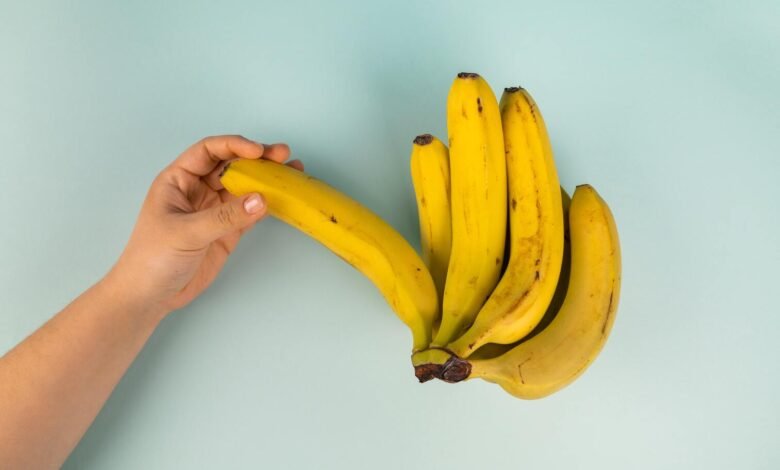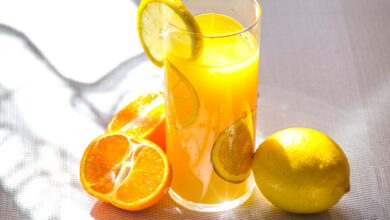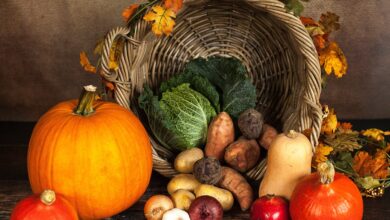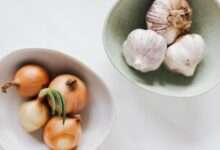
The benefits of bananas
Thanks to its unique composition, the flesh of the banana turns out to be a real daily health ally. Satisfying, rich in dietary fiber and micronutrients, it has its place as part of a varied and balanced healthy diet.
Cancers
A prospective study, carried out among 61,000 Swiss women, demonstrated a link between high fruit consumption and a lower risk of suffering from kidney cancer. Of all the fruits studied, the researchers found the strongest relationship with bananas. The banana would have the same beneficial effect on the risk of colorectal cancer, both in women and men.
stomach ulcers
Some in vitro and animal studies tend to show that banana in the form of an extract (especially plantain, but also the dessert variety) could protect the stomach lining against ulcers. A study has shown that the extract of 2 varieties of bananas grown in Thailand (Palo and Hom) would have a gastroprotective potential in rats. However, only the Hom variety is said to have an effect on healing ulcers. This type of banana would be close to the Cavendish, the most widespread variety in the world. Current research, however, is insufficient to recommend the consumption of bananas for the prevention or treatment of gastric ulcers.
Chronic diarrhea
A few studies conducted in Bangladesh have shown that eating bananas can reduce the symptoms of chronic diarrhea in children. In some cases, a mixture of rice and cooked plantains or a mixture of rice and pectin could decrease the number and weight of stools, as well as the duration of diarrhea in babies. In other cases, the consumption of unripe bananas (½ to 3 bananas per day, depending on the age of the children) hastened the healing of acute and chronic diarrhoea. Another study carried out in Venezuela showed that a diet comprising a preparation based on cooked plantain reduced the number and weight of stools, the duration of diarrhea and promoted weight gain, compared to a traditional preparation based on yogurt.
Also, the unripe banana contains resistant starch, a type of sugar that resists the action of digestive enzymes (in the same way as dietary fiber) and which goes intact in the colon. Under the action of the intestinal flora, the undigested starch then undergoes a fermentation there, which transforms it into fatty acids with short chains (for example butyric acid). These stimulate the absorption of liquids and salt in the colon, thus reducing the loss of water in the stool. Short-chain fatty acids would also indirectly improve the permeability of the small intestine, a phenomenon that helps relieve the symptoms of diarrhea.
Cardiovascular illnesses
A study indicated that a high consumption of bananas during a meal (400 g, or more than 3 bananas) reduced the free radicals present in the body, 2 hours after the meal. This diet decreased the oxidation of LDL-cholesterol (bad cholesterol), a process involved in the development of cardiovascular disease. However, other studies will be necessary in order to target the effects of bananas in the longer term and with more moderate doses.
Type 2 diabetes
The resistant starch (a type of sugar) in unripe bananas is said to contribute to weight loss in obese individuals suffering from type 2 diabetes, as well as to improve the sensitivity of cells to insulin. A resistant starch extract from unripe bananas is also thought to lower insulin secretion and glycemia (blood sugar levels) in both healthy individuals and those with type 2 diabetes.
Researchers have observed that resistant starch decreases the absorption of sugars consumed at the same time, which leads to a decrease in glycemia (blood sugar level). Additionally, regular consumption of resistant starch would lead to a greater increase in mealtime ghrelin, a hormone that has been linked to improved insulin sensitivity.
Antioxidants and carotenoids
Although the banana is not among the fruits that contain the most antioxidants, it still has a high antioxidant capacity, which could possibly help prevent the onset of certain cancers, cardiovascular diseases and various chronic diseases. The very popular Cavendish banana is said to contain dopamine, a molecule from the catecholamine family. Dopamine demonstrated antioxidant activity similar to that of vitamin C, the most potent water-soluble antioxidant. As banana contains both dopamine and vitamin C, this could explain its high antioxidant capacity. Plantain is also an important source of several phenolic compounds that are well absorbed by the body, thus optimizing their antioxidant potential.
A flavonoid antioxidant, leucocyanidin, has been extracted from unripe plantains. This active compound has demonstrated a protective effect against the erosion of the stomach lining, following the intake of aspirin.
The plantain banana contains beta and alpha-carotene, 2 carotenoids with the ability to transform into vitamin A in the body. Of all the carotenoids, beta-carotene is the most efficient in converting to vitamin A. The latter promotes the growth of bones and teeth, keeps the skin healthy and protects against infections.
Nutritionist’s word
Plantains contain more resistant starch than sweet bananas. Also, as the banana ripens, the amount of resistant starch decreases to such an extent that only bananas that have not reached their optimum ripening stage would contain resistant starch in significant amounts.








